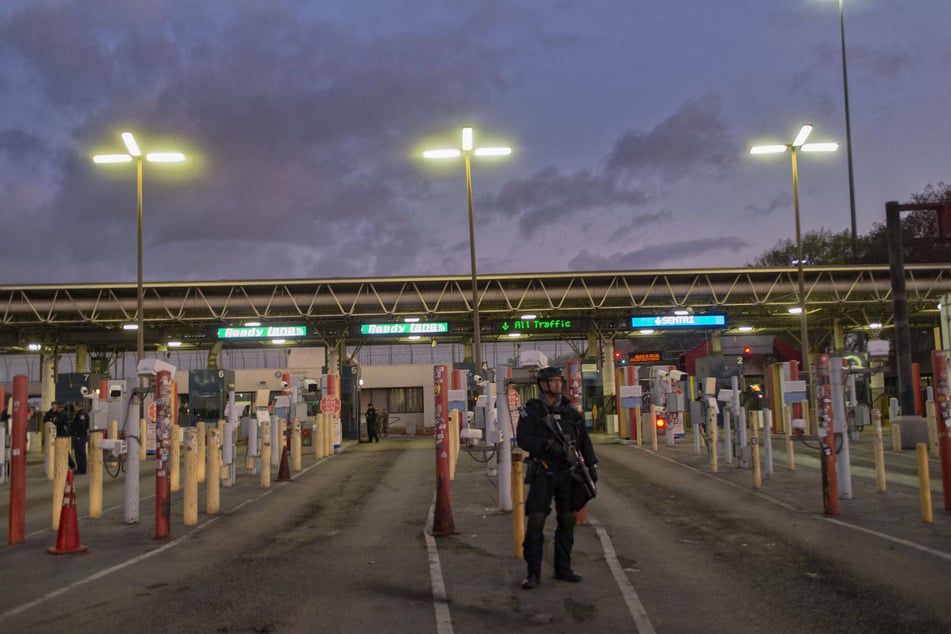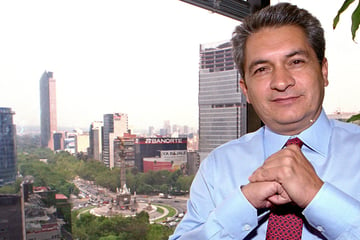California and Mexico to open new border crossing by late 2024
Alexandra Mendoza, The San Diego Union-Tribune
Otay Mesa, California — The governments of California and Mexico signed an agreement Monday committing to work together to deliver a new border crossing at Otay Mesa in San Diego by late 2024.

Unlike other ports of entry, such as San Ysidro and the one already operating in Otay Mesa, this new gate would require a toll fee that would offer an average wait time goal of 20 minutes to cross the border.
Currently, passenger vehicles and commercial trucks crossing the border between Tijuana and San Diego can endure tedious waits, harming business and the environment, officials said.
"This new port of entry will not only spur economic activity, but it will also improve the quality of life for the millions of Californians and Mexicans who frequently cross one of the busiest borders in the world," said California Lieutenant Governor Eleni Kounalakis.
"A great example of California’s leadership in combating climate change. The project will reduce greenhouse gas emissions and improve mobility in the region," she added.
Otay Mesa East, also known as the Otay II project, will help reduce wait times at existing border crossings and is projected to provide an economic boost of $1.8 billion annually, officials said.
With the signing of the memorandum of understanding, both countries commit to meeting their respective construction projects, quickly resolving policy issues, and establishing a framework to share toll revenues for project funding.^
"We know what it takes to get it done. We have certain milestones to meet, and now we have this document that memorializes our commitment to the project," said California Secretary of Transportation David S Kim after the signing ceremony Monday at the construction site in Otay Mesa.
Velasco: "We believe in building bridges not in building walls"

On the California side, the $1 billion project has already secured $565 million in local, state, and federal funding. The remainder is expected to be financed mostly through toll revenue.
On the Mexican side, a first phase investment of more than $186 million is contemplated for construction work and access roads, according to Roberto Velasco, Director of North America with the Mexican Ministry of Foreign Affairs.
Last year, Mexican President Andres Manuel Lopez Obrador included the Otay II project within an infrastructure plan that seeks to reactivate the economy.
Velasco emphasized that this project is a symbol of the strong binational relationship: "We believe in building bridges, not in building walls, and this is important for us in that sense."
"This is the future of the US-Mexico relationship that we want. A future where we are more connected, and we allow for the many different possibilities that life in the border offers to both of our countries," he added.
Initially, Otay Mesa East will have five lanes for vehicles and five more for commercial trucks, with the option for these to be interchangeable depending on the time and demand, explained Maria Rodriguez-Molina, project manager with SANDAG.
Toll fees will not be collected at the US Customs and Border Protection inspection point, but "either through electronic pay" or in toll booths that will be placed within the US on the State Route 11.
Toll collection will be for both northbound and southbound traffic. The revenue will be divided between the US and Mexico, added Mario Orso, project director with Caltrans.
On the US side, the project started eight years ago with the construction of the SR-11. Construction of the new port is now under way on a 100-acre area a few miles east of the current Otay Mesa border crossing.
In Tijuana, construction is expected to begin next year to meet the timeframe both countries established.
The news comes just after Vice President Kamala Harris' first trip to the US-Mexico border, in Texas, on Friday.
Cover photo: MAGO / Hans Lucas

